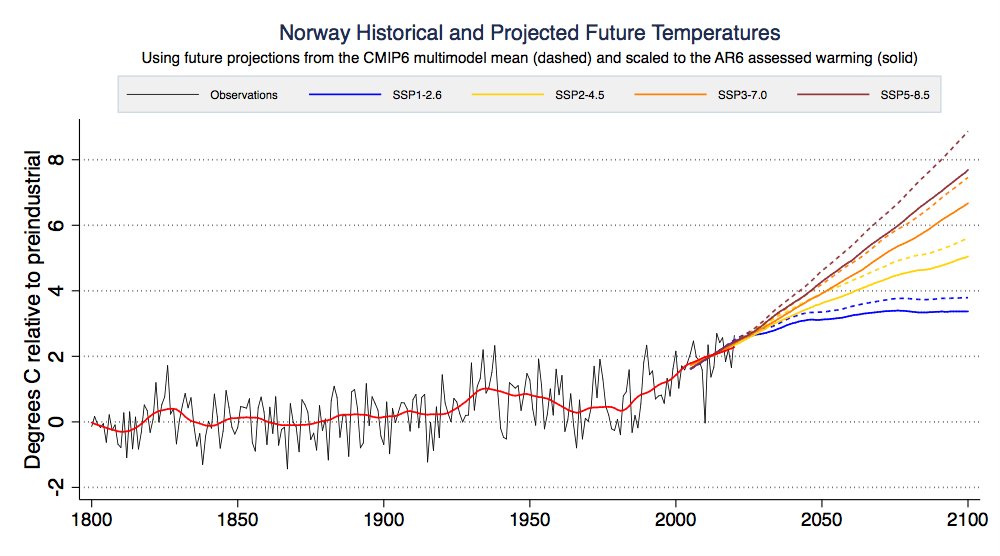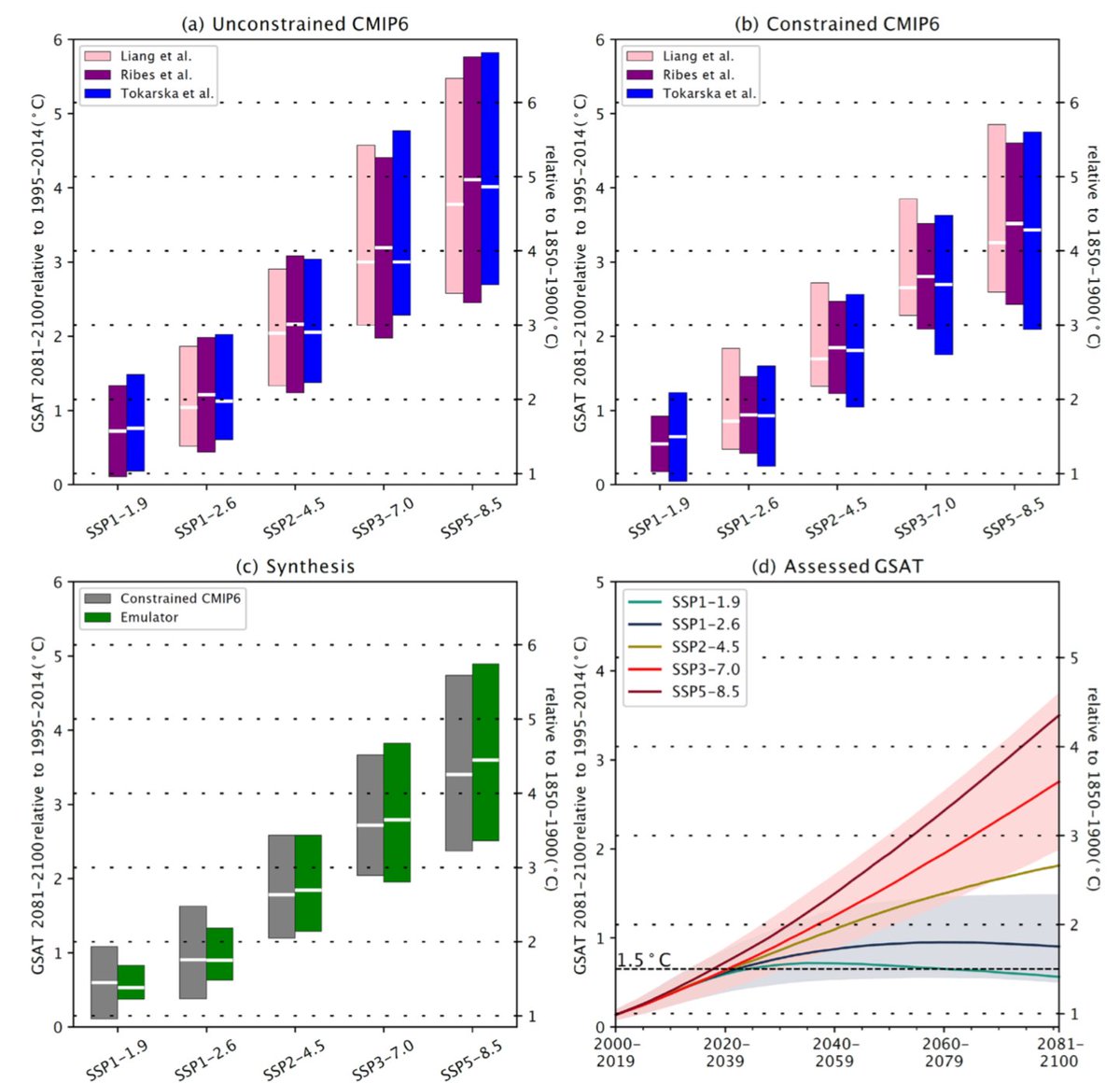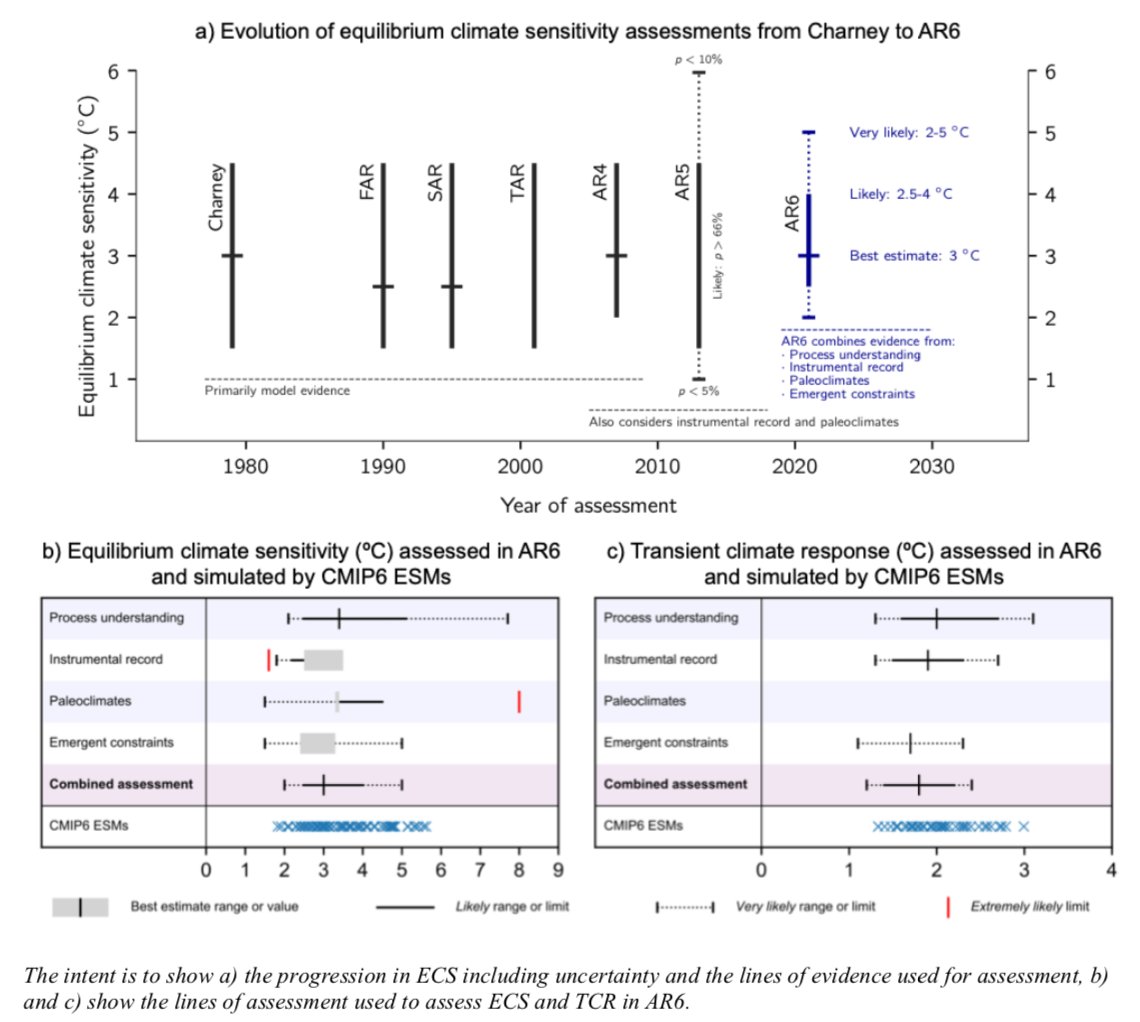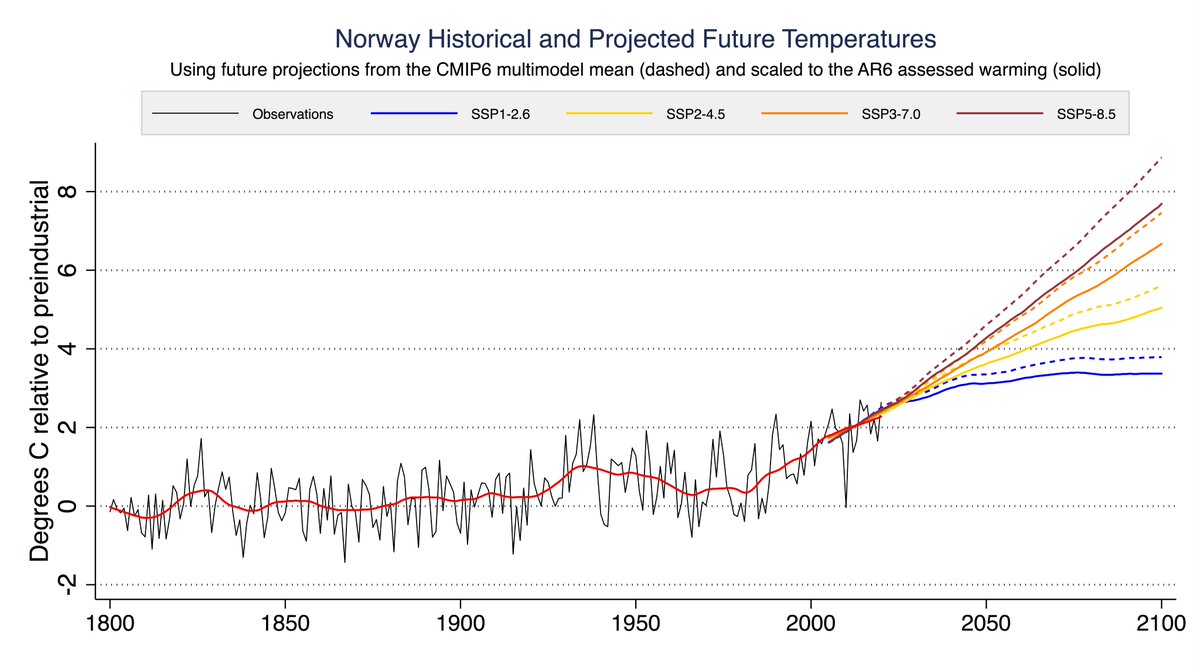
We are setting the stage for a lot of confusion given differences in the future warming projections in the IPCC AR6 and the latest generation of models (CMIP6). For example, here are future projections for Norway from CMIP6 (dashed) and scaled to AR6 assessed warming (solid): 

Right now most folks doing assessments would use the dashed lines, even though they are inconsistent with the best estimate of warming in the AR6. This is because there is currently not any gridded future warming projections available that are consistent with AR6 assessed warming
The AR6 took a novel (and I think improved) approach to future warming projections. Rather than simply using the CMIP6 mean, they used three different weighted CMIP6 estimates – with weights based model agreement with observed temperatures over the past few decades. 

This means that models with too much or too little historical warming were given less weight in the resulting analysis. These three weighted estimates were averaged, and further combined with a simple emulator tuned to the latest climate sensitivity estimates. 

This produces warming estimates that are noticeably below those of the CMIP6 multimodel mean – given that very high sensitivity models are given less weight (and are inconsistent with the sensitivity ranges used by the emulator).
To create the figure in at the start of the thread, I've scaled each grid cell in the CMIP6 multimodel mean by the ratio of AR6 assessed GSAT to CMIP6 mean GSAT. This pattern scaling works reasonably well for the mean, but does not provide an easy way to account for uncertainties
What would be useful is if the community could create a set of weights (and pre-calculated weighted fields) in-line with AR6 assessed warming ranges for researchers to use for their own analyses. Otherwise we will see a lot of too-warm unweighted CMIP6 results in future papers.
Accidentally exported a too-small version of the figure at the start of the thread. Here is a crisper version: 

• • •
Missing some Tweet in this thread? You can try to
force a refresh








